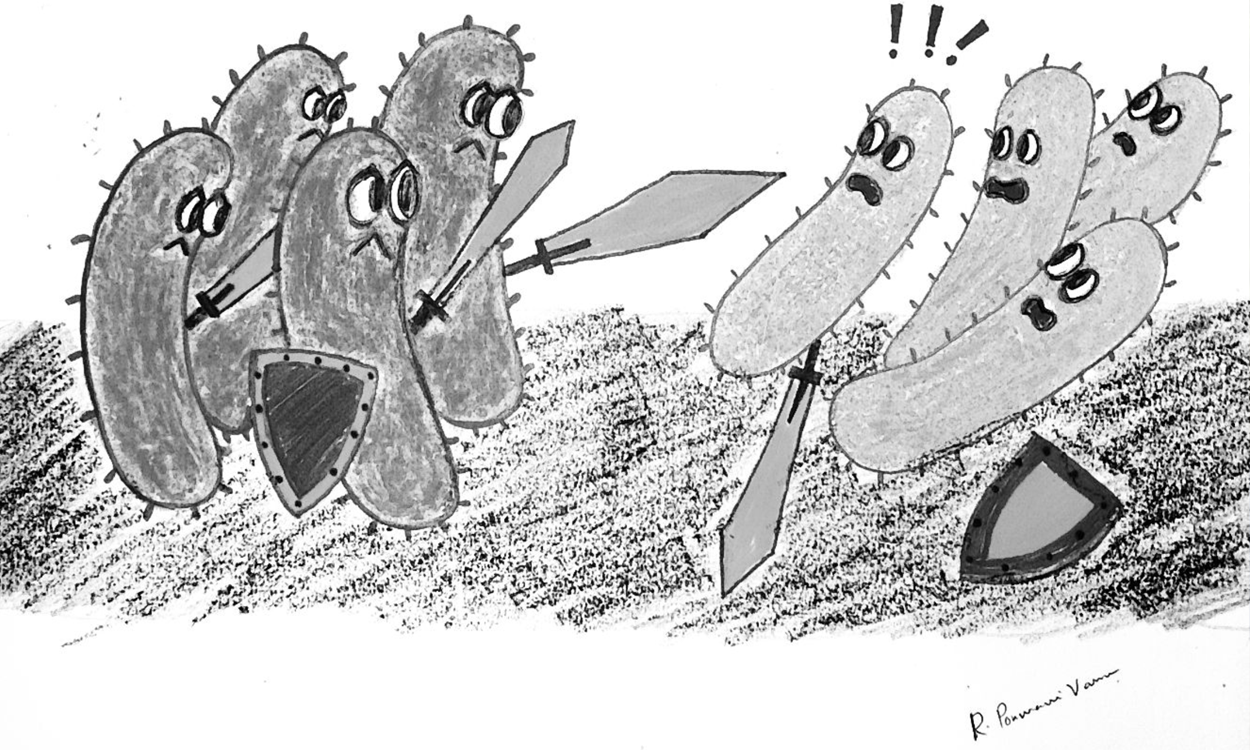
Bacterial species compete with each other for similar resources and this can be exploited to treat some of the diseases. A polymeric matrix that binds a bacterial colony (called biofilms) if inhibited by other bacteria causes collapse of the bacterial growth. A simple way to achieve this is to identify a nonpathogenic bacteria to inhibit disease causing agent.
JAN 27, 2021 | BY RATNESHWAR THAKUR, RAJESH GUNAGE
Bacteria lives in a gigantic colony supported by matrix called biofilm. Medically, biofilms are challenging because Biofilm acts as a glue that keeps bacterial colony together, and provides resident cells antibiotic resistance and protection from immune cells. Biofilm formation also indicates a progressive stage of bacterial infection and something commonly seen in urinary tract infections. Now researchers have found more clues about how these biofilms develop, and possibly how to stop them.
In a new study, Dr. Srinandan and team identified that bacteria from same family prevent each other’s growth by direct interference in the biofilm matrix formation. According to the results published in FEMS Microbiology Ecology journal, Glycopeptide or polysaccharides produced from one bacterial species targets another by inhibiting the latter’s biofilm formation and thus preventing its colonization.
Uropathogenic E. coli (UPEC) is a notorious species of bacteria responsible for most of the Urinary Tract Infections. UPEC bacteria form biofilm in the gut, urinary bladder, and on catheters, where the cells aggregate and enmesh themselves in a self-produced gum-like matrix substance. The biofilm formation plays a key role in prolonging the disease and recurrence of the infection.

Dr. Srinandan says - Interestingly, identification of the bacterial isolates that inhibited matrix production belonged to same family called Enterobacteriaceae (Bacteria that predominantly live in intestine). “We observed that when the UPEC bacteria and the bacterial isolates were competed, it resulted in mutual inhibition, particularly during surface colonization, indicating territorial fights between them. Territoriality is commonly observed in higher organisms. In this study, we also observed that Salmonella strains (which causes colitis) competitively excluded the UPEC strain from the territory by interfering and inhibiting its matrix production,” he added.
With this finding, Srinandan said, the discovery of territorial conflict between bacterial species, particularly the enteric bacteria (to which many infection-causing species belong, like Salmonella, E. coli, etc.) may potentially be exploited to treat infections, especially in this antibiotic resistance era (by employing one species against the other, but of course using a non—pathogenic species called probiotics).
Journal Reference:
Matrix inhibition by Salmonella excludes uropathogenic E. coli from biofilm
Disclaimer:
Authors claim no competing interest.

